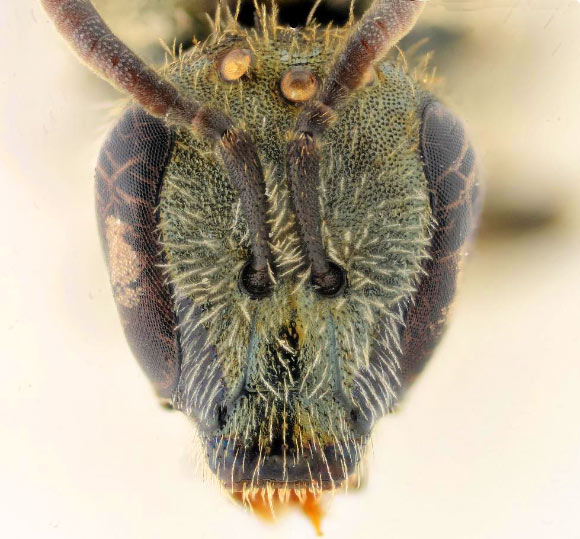An international team of scientists has discovered a new species of the bee genus Lasioglossum living in sand dunes in Israel.
Lasioglossum is a genus of wild bees in the family Halictidae (commonly referred to as sweat bees).
It is the largest of all bee genera, containing over 1,700 species in numerous subgenera worldwide.
Lasioglossum bees are highly variable in size, coloration, and sculpture. Most species nest in the ground, but some nest in rotten logs.
The newly-discovered species, named Lasioglossum dorchini, is known only from the central coastal plain of Israel.
“The type locality in Nahal Alexander National Park is characterized by semi-stabilized sand dunes typical of Israel’s central coastal plain,” said senior author Professor Yael Mandelik from the Department of Entomology in the Robert H. Smith Faculty of Agriculture, Food, and Environment at the Hebrew University of Jerusalem and colleagues.
“The park was planted in part with non-native Eucalyptus trees in the mid 1960s, mainly Eucalyptus camaldulensis.”
“The natural shrubland flora is dominated by Artemisia monosperma, Retama raetam and Ephedra aphylla.”
“Bees were collected in the north western part of the park, during spring (February-April). Most specimens were captured with pan traps and some others were collected with nets while visiting flowers of Asteraceae.”
Lasioglossum dorchini is very tiny, approximately 6 mm (0.24 inches) in length.
“Beyond just the professional excitement of discovering a new species that was previously unknown to science, this finding has broader applicative value in helping us better understand bee communities, their habitat requirements and the pollination services they may provide,” Professor Mandelik said.
“We observed changes in bee communities and in the availability of their food and nesting resources in the restored habitats,” sad co-author Karmit Levy, a Ph.D. candidate in the Robert H. Smith Faculty of Agriculture, Food, and Environment at the Hebrew University of Jerusalem.
“In general, we can see that restoration efforts have positive effects on bee communities.”
The discovery is reported in a paper in the Belgian Journal of Entomology.
_____
Alain Pauly et al. 2020. Lasioglossum dorchini (Hymenoptera: Apoidea: Halictidae) a new species of bee from Israel. Belgian Journal of Entomology 105: 1-24









